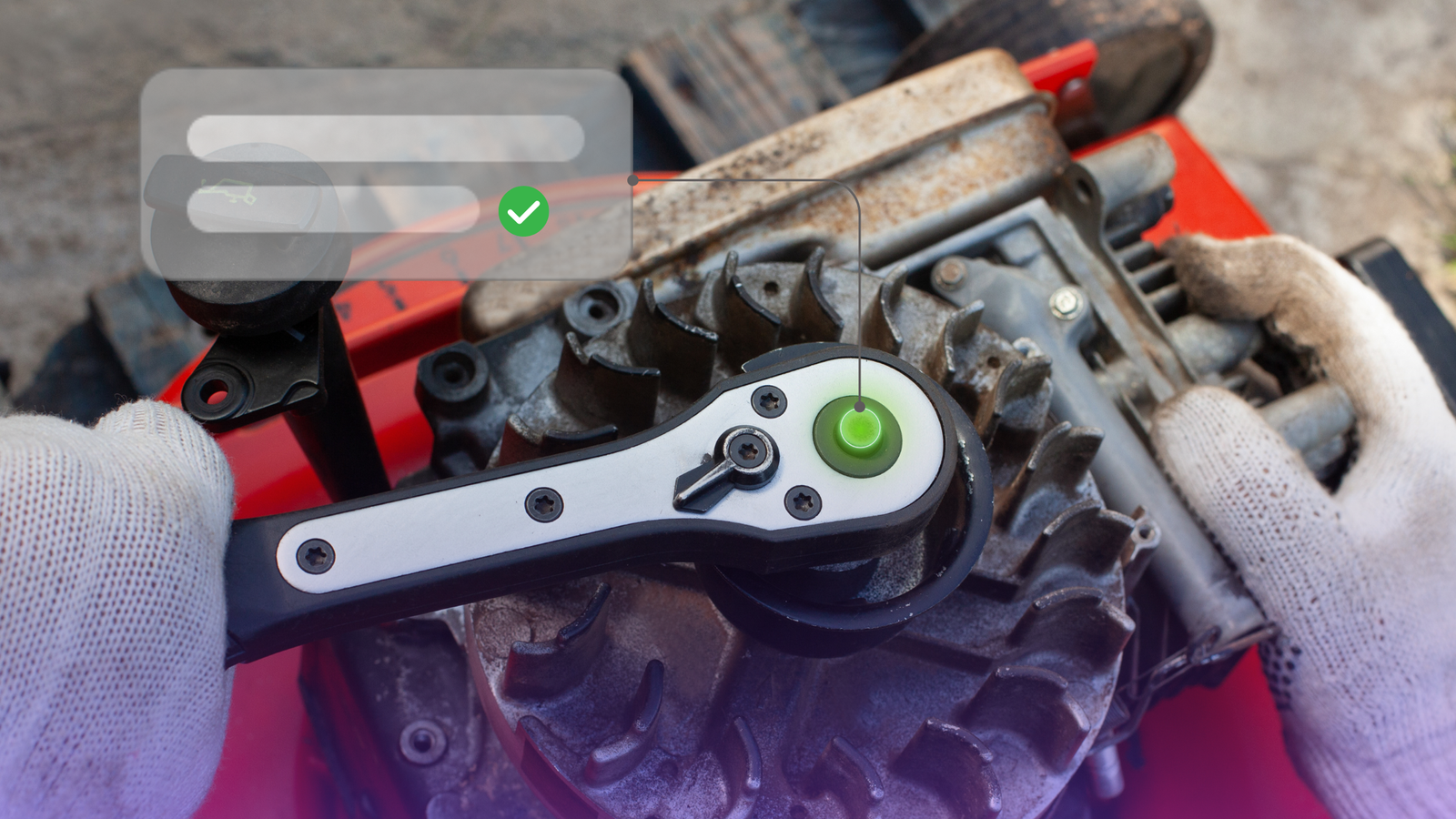In today’s fast-paced manufacturing environment, human error remains one of the leading causes of defects and production delays. Especially in discrete manufacturing, where precision and repeatability are critical, even a small mistake during an assembly task can lead to costly rework, scrap, or worse, a safety risk.
At TwinWorks, we believe technology can help. That’s why we created StepWorks, a visual work instruction platform designed to reduce human error and improve operator performance.
TwinWorks Co-founder, Mina Ghobrial, recently conducted independent research at the Institut Clément Ader to explore how augmented reality (AR) and connected tools could improve outcomes during bolt-tightening tasks.
Human Error in Assembly: A Costly Problem
Traditional work instructions, whether printed on paper or delivered via static PDFs, often lack clarity, consistency, and adaptability. Operators are left interpreting diagrams, navigating language barriers, and manually verifying torque settings or part placements. This increases cognitive load and opens the door to costly human error.
Industry research shows a significant portion of assembly defects are caused not by equipment failure, but by unclear instructions and process deviations. For SMEs with leaner teams and tighter margins, these errors can have an outsized impact.
The Study: AR + Connected Tools vs. Conventional Methods
In the study, participants completed a bolt-tightening task using two different setups:
- Conventional method: Paper-based instructions and a connected torque wrench
- AR-enhanced method: A head-mounted AR display combined with a connected torque wrench that communicated torque values and validated steps in real time
The AR system didn’t just display steps visually. It also integrated with the torque wrench to ensure each action was performed correctly before moving on. This combination of real-time visual guidance and smart validation significantly improved performance across key metrics.
What the Data Says
The results highlight how AR combined with connected tools can enhance quality, reduce errors, and ease operator workload:
| Metric | Conventional Method | AR Enhanced Method |
|---|---|---|
| Execution Time | 10:23 min | 5:39 min |
| Task Load (NASA-TLX) | 7.0 | 5.1 |
| Error Rate | 67.6% | 0% |
| Usability Score (SUS) | 73.1% | 74.4% |
AR-enhanced instructions cut task time nearly in half, eliminated user errors entirely, and, reduced cognitive load, demonstrating clear performance and quality gains over traditional methods.
While the findings are specific to this task setup, they point to the broader potential of combining visual technologies with smart tools to reduce human error in industrial operations.
StepWorks: Making AR Work Instructions Accessible for Manufacturing Teams
The study evaluated a combined system of AR work instructions and connected tools to enhance accuracy and performance in bolt-tightening tasks. StepWorks brings the AR part of that solution into practical reach for manufacturers.
StepWorks transforms existing 3D CAD models and documentation into digital work instructions that are clear, interactive, and easy to deploy on mobile devices, tablets, and AR headsets. This allows teams to reduce errors, improve consistency, and accelerate operator training and task completion.
Key Features:
- One-click work instruction generation from CAD and existing docs
- Step-by-step guidance with animations and text
- Automatic translation for global teams
- Procedures can be viewed on mobile, tablet, and AR headsets
- Data capture for traceability and future analysis
Transform Your Operations with StepWorks
Assembly
Replace paper instructions with 3D, animated guides that walk your team through complex assemblies.
Training
Reduce onboarding time for new operators. Let them learn by doing, with interactive instructions in their field of view.
Maintenance
Speed up maintenance workflows by guiding technicians through procedures with intuitive, step-by-step visuals. Minimize delays, avoid confusion, and cut equipment downtime.
Get Started with StepWorks
Backed by research, designed for humans, and built for modern manufacturing.
Ready to reduce errors and increase efficiency? Get started for free.

